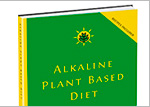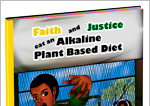Canadian River Dumping Artificial Sweeteners Into Lake Erie

Article by Elizabeth Renter, Natural Society
Natural Life Energy
Artificial sweeteners are found in everything from soft drinks to yogurts and gum. And unfortunately, their prevalence in our food system means they can similarly be found in our environment.
A new study published in PloS One indicates a Canadian river used for drinking water contains the highest concentration of artificial sweeteners in surface waters worldwide.
The river is Canada’s Grand River, which flows into Lake Erie in the Northern U.S. Twenty-three different sites along the river were tested for four of the most popular artificial sweeteners: sucralose, acesulfame, saccharin, and cyclamate.
At their greatest concentrations, sucralose was found at 21 parts per billion, cyclamate at 0.88 parts per billion, and saccharin at 7.2 parts per billion. Acesulfame was the most commonly found, identified at 21 of the 23 test sites.
These are the highest levels ever reported for these compounds in the watershed.
“Although concentrations… in the Grand River are small compared to the products they are derived from (e.g. diet drinks), mass fluxes of these compounds to Lake Erie via the Grand River are substantial,” wrote study authors.
According to Environmental Health News, this was the first study to look at the presence of such sweeteners in a river used for drinking water.
But, it isn’t the first to identify the artificial sweeteners as pollutants.
In 2011, a study that sampled 19 different drinking water systems within the U.S. found sucralose present in 15.
This means that even those of us who try to avoid the toxins are likely being exposed to them unwittingly.
Sucralose, known as the brand name Splenda, is more chemically-related to DDT and Agent Orange than sugar.
As Mercola reports, it’s known to destroy gut bacteria, essential for immune and digestive health. One extensive review of Splenda and sucralose found that:
- “Sucralose alters metabolic parameters and its chronic effects on body weight are unknown.”
- “Sucralose alters P-gp and CYP expression.” This means it could work to interfere with drugs and activate detoxification enzymes in the body.
- “Sucralose alters indigenous bacterial balance in the GIT.”
So is Splenda safe? I think not.
These sweeteners are marketed as weight loss solutions, a way to cut down on sugar. But in reality, they are doing far more damage than the original they intend to replace.
While these studies conclude by saying artificial sweeteners are a good method of tracking wastewater into the drinking water supply, this shouldn’t be the only conclusion.
Sure, the artificial sweeteners are making their way into the water supply because they are being eliminated from humans who consume them, but we need to also look at how their presence in the water system will affect the ecosystem including plants, fish, and the humans that once again consume them.







